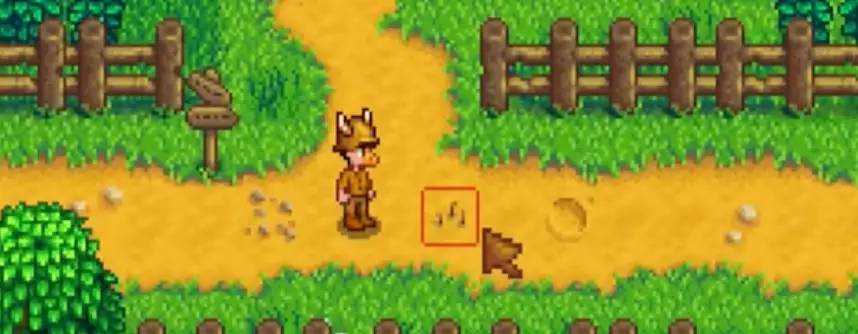Digging into Stardew Valley Worms: Tips, Tricks, and Rare Drops
Hello everyone, today we’re going to discuss the worms in Stardew Valley, also known as ancient spots. These are the little heads that pop up from the ground, wriggling around. You can use a hoe to dig them up. In spring, summer, and fall, they can only appear on soil tiles, while in winter, they can appear on grass tiles, like the vast green fields in the Forest Farm. Let’s dive into some tips and tricks!

Worms and Seasons
Worms and Seasons During winter, grass tiles turn into snow tiles. If worms appear on snow tiles, you can use a hoe to dig them up and plant something. Once spring arrives and the planted crops wither, the tiles will remain tillable. This trick helps convert grass tiles into soil tiles, though it may not be practical for large areas. However, it’s still useful for planting flowers and placing bee houses in small patches.
Worm Drops
Worm Drops Each map yields different items when digging up worms. You can find lost books, artifacts, ores, clay, coal, or stones. In winter, you may discover snow yams and winter roots. If all lost books have been found, they will be replaced with mixed seeds. With a magnifying glass increases the chances of finding secret notes. During the Qi Bean quest, you may also uncover Qi Beans, and after completing the 100 bone task in the museum, there’s a chance to find bone fragments.
Artifact and Totem Drops
Artifact and Totem Drops Starting in summer, you may find Warp Totems from worms. Each map yields different artifacts with very low drop rates. The spawn rate of worms is also low, making it challenging to collect all artifacts solely by digging up worms. However, you can change the day by saving and loading to increase your chances of finding the desired artifacts. On Ginger Island, you can find even more items such as Golden Coconuts, Taro Tuber seeds, Mahogany seeds, Ancient Treasure, Omni Geodes, and Magic Bait.
Ginger Island Worms
Ginger Island Worms, Worms on Ginger Island are worth digging up. I once found two Golden Coconuts and three Ancient Treasures from a single worm. It seems that the worm spawn rate on Ginger Island is higher, especially in the excavation area. Be careful as bombs can destroy worms. Enchanting your hoe with the “Generous” enchantment grants a 50% chance to double the output. The “Archaeologist” enchantment doubles the chances of finding artifacts.
Island Worm Drops
Northern parts of the island can yield Snake Skulls, while the southern parts can produce Rib Fossils. Ginger Island Farm may drop Snake Skulls and Snake Vertebrae. Worm drops on Ginger Island Farm can change depending on the number of times you’ve tilled the soil, so you can adjust your tilling frequency to find Snake Vertebrae.
Worm Spawn Rates
Worm spawn rates vary across different maps and are directly proportional to the number of possible spawn locations. The more available tiles for worm spawning, the faster the spawn rate. Bus Stop has the slowest spawn rate, while the Desert spawns worms much faster. Ginger Island Farm’s spawn rate depends on the number of planted crops – fewer crops mean faster spawns. Worms can also spawn on green tiles in winter, resulting in a higher spawn rate during winter compared to other seasons.
Worm Persistence
Worm Persistence Worms’ persistence is not fixed. They have a 15% chance to disappear daily, a 39% chance on Saturday nights, a 28% chance when seasons change, and a 100% chance when the year changes. If you want to hunt for worms while saving time, searching for them on Saturdays is a great choice.
Conclusion
Understanding the intricacies of worms and their drops in Stardew Valley can help you make the most of your in-game experience. By knowing when and where to find worms, as well as what they might drop, you can collect rare items and artifacts with greater efficiency. Happy digging!